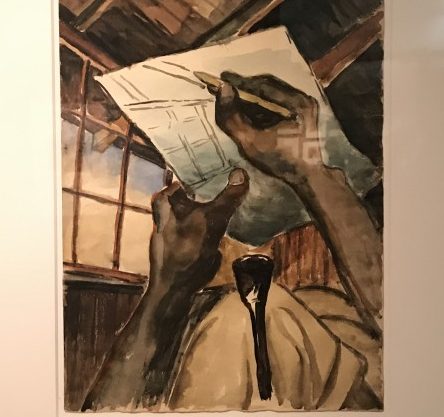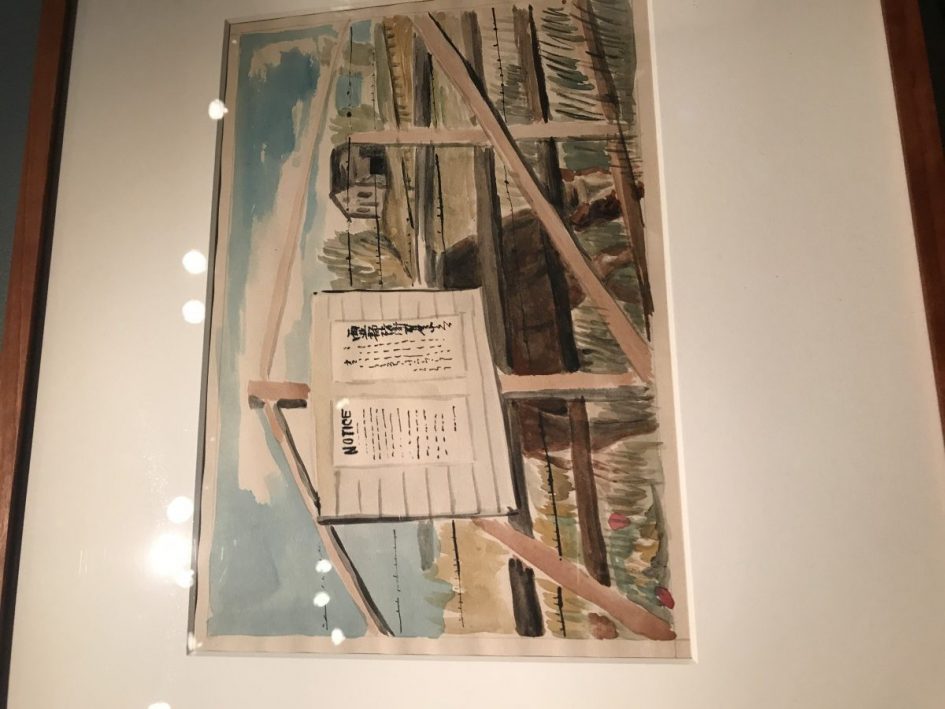I can’t imagine the amount of both stress and boredom that must’ve been felt by those imprisoned in the Japanese internment camps during World War II. The uncertainty and lack of control over one’s future must’ve a special type of hell. On the flip side, there must’ve been stretches of boredom and tedium that would make any sane person to go a little crazy.

Takuichi Fujii, Fuji’s daughter Satoko (?) combing her hair
Witness to Wartime is a collection of artwork by Takuichi Fuji currently at the Tacoma Art Museum. Through this exhibit, we are given a small peak into his life during World War II, but more specifically his experiences in the Japanese internment camps. As an artist from the Pacific Northwest, it gave me an especially personal and relatable story as many of the locations and sights are places I’ve actually visited. It’s always an odd experience to visit the Puyallup Fair’s internment camp memorial while surrounded by masses of people riding amusement park rides and eating decadent junk food.
The exhibit is beautiful. Mixing oil paintings, inks, and watercolors, Fuji gives us a lyrical version of what must’ve been an especially hard and bleak time of his life. The paintings range from realistic renditions of internment camp life as well as a number of beautiful abstracts that embody a certain aspect of this time that couldn’t be expressed literally. It’s inspiring to see an artist fall back on his craft and passion in order to find some comfort. One image, really struck me. It was a drawing of Fuji’s own hand drawing by by the glow of a flashlight. I’m reminded of those “fugitive moments of compassion” that Chico mentioned in a lecture last week. These small moments in history where people act out not with malice and aggression, but with compassion and beauty. I think that’s what Fuji captured for me. Imprisoned, nameless, and without rights, an artist can still engage in their craft and create something wonderful out of nothing.

Fuji, drawing by flashlight
